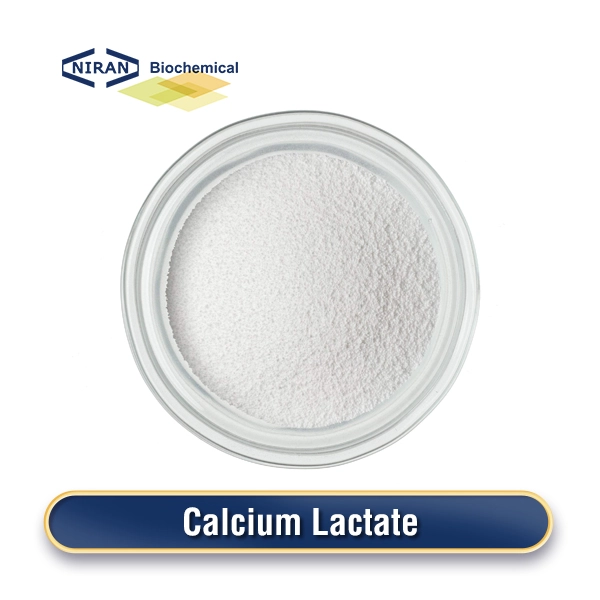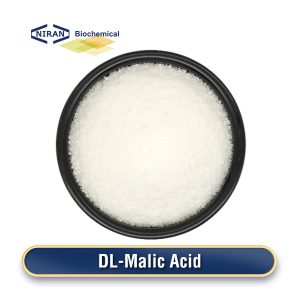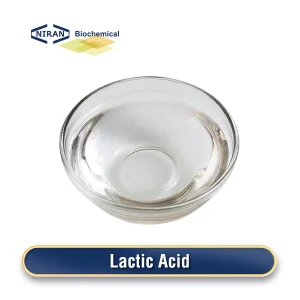What is Calcium Lactate?
Calcium Lactate is white granules or powder, has no peculiar smell, and tastes bitter. It is slightly efflorescent, easily soluble in hot water, and insoluble in ethanol, ether, and chloroform. It has high solubility, fast dissolution rate, high bioavailability, and good taste, and is widely used in dairy products, beverages, food and health products, etc.
The main raw materials for the production of Calcium Lactate are lactic acid and calcium carbonate (lactic acid can be obtained from starch or sucrose by fermentation, and calcium carbonate can be extracted from natural limestone).
First, add an appropriate amount of lactic acid and calcium carbonate to the reactor, control the temperature and pH value, react, remove impurities and solid residues, then wash the solid residues with an appropriate amount of water to make it purer, and finally dry the filtered solid residues to remove moisture, and then grind and sieve the dried calcium lactate to make the required granules or powders.
Related parameters:
| Items | Specificactions | Results |
| Solubility | Soluble in water, practically insoluble in ethanol | Meet the requirement |
| Test for lactate | Passes test | Past |
| Test for calcium | Passes test | Past |
| Assay | >98% | 98.91% |
| Loss on drying (120℃,4 h) | 22.0~27.0% | 24.62% |
| PH (1 in 20 ) | 6.0-8.0 | 6.88 |
| Acidity | Dissolve 1 g of the sample in 20 ml of water, add 3 drops of phenolphthalein TS, and titrate with 0.1 N sodium hydroxide. Not more than 0.5 ml should be required. | Meet the requirement |
| Magnesium& alkali metal | <1.0% | <1.0% |
| Fluoride | 30ppm | <15ppm |
| Lead | <2ppm | 0.09ppm |
Recommended dosage
| Food name | Maximum usage(g/kg) |
| Carbonated beverages | 0.1-0.3 g/kg |
| Starch products | 0.1-0.2 g/kg |
| Jelly | 0.2-0.4 g/kg |
| Salad dressing | 0.2-0.4 g/kg |
| Ice cream | 0.2-0.3 g/kg |
| Aquatic product processing | 0.1-0.3 g/kg |
| Seasonings | 0.2-0.5 g/kg |
| Soy products | 0.1-0.3 g/kg |
| Soy sauce | 0.1-0.3 g/kg |
| Ham | 0.1-0.2 g/kg |
| Bread | 0.1-0.2 g/kg |
| Barbecued products | 0.2-0.4 g/kg |
| Dairy products | 0.2-0.3 g/kg |
| Quick-frozen food | 0.1-0.3 g/kg |
| Chocolate | 0.1-0.3 g/kg |
Calcium Lactate has a wide range of uses
1. Nutritional effect
Calcium lactate can provide the human body with calcium required for bones, maintaining normal growth and development and bone health.
2. Maintaining the pH of food
Adding calcium lactate can adjust the pH of food, reduce acidity and taste, and improve the quality of food.
3. Improving the quality of dairy products
Calcium lactate can prevent the quality of dairy products from deteriorating during storage and transportation.
4. Antioxidant and antibacterial effects
Calcium lactate also has antioxidant and antibacterial effects, effectively maintaining food quality.
User asked question:
Q: Is there a difference between calcium lactate and calcium citrate?
A: Calcium lactate and calcium citrate (containing elemental calcium, calcium lactate and calcium gluconate) are both second-generation organic calcium, with relatively small differences. Whether it is cost-effectiveness, absorption rate, bioavailability, or side effects, the two are almost the same.
Compared with the first-generation inorganic calcium, it has less impact on patients, does not require the participation of gastric acid, and has very little impact on the gastrointestinal tract.
Q: Can baking soda be used instead of calcium lactate?
A: Of course not, because baking soda is an alkaline substance, mainly used to regulate acid-base balance. Calcium lactate is a calcium supplement, mainly used to supplement the calcium element needed by the human body. Although both contain calcium, their chemical properties and mechanisms of action are different.
Calcium lactate is more easily absorbed and utilized by the human body, which can help maintain bone health, promote nerve and muscle function, maintain the normal functioning of the heart, etc. Therefore, if calcium supplementation is needed, it is recommended to choose calcium lactate supplements instead of baking soda.




